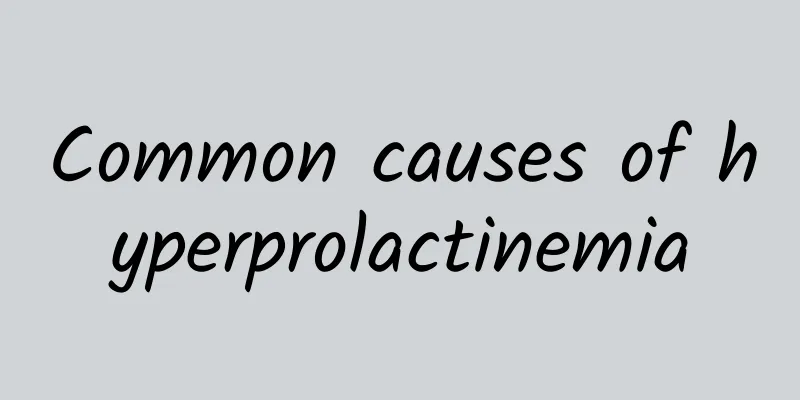Dietary considerations for patients with cervical precancerous lesions include

|
There are dietary treatments for cervical precancerous lesions, and the significance of dietary treatments is mainly two aspects. One is to help inhibit the development of the disease, and the other is to help regulate the body. However, uterine cancer patients also have dietary taboos, especially after treatment, they should be more vigilant in this regard. The following is a summary of dietary precautions for patients with cervical precancerous lesions: 1. Early cervical precancerous lesions generally have little effect on digestive tract function. The main purpose is to enhance the patient's disease resistance and improve the immune function. Nutrients should be supplemented as much as possible. Protein, sugar, fat, vitamins, etc. can be reasonably consumed. When the patient has heavy vaginal bleeding, some blood-tonifying, hemostatic, and anti-cancer foods should be taken, such as lotus root, coix seed, hawthorn, black fungus, and ebony. When the patient's leucorrhea is watery, nourishing foods such as turtle, pigeon eggs, and chicken are suitable. When the patient's leucorrhea is thick and smelly, it is suitable to eat light and damp-removing foods, such as coix seed, red bean, and white imperata root. 2. After the operation, the diet should be adjusted to replenish qi and blood, and produce essence and replenish essence, such as yam, longan, mulberry, wolfberry, pork liver, turtle, sesame, donkey skin glue, etc. 3. During chemotherapy, the diet should focus on strengthening the spleen and kidney. You can use yam powder, barley porridge, animal liver, placenta, donkey-hide gelatin, turtle, fungus, wolfberry, lotus root, banana, etc. When gastrointestinal reactions, nausea, vomiting, and loss of appetite occur, you should adjust your diet to strengthen the spleen and stomach, such as sugarcane juice, ginger juice, black plum, banana, kumquat, etc. 4. During radiotherapy, dietary adjustments should focus on nourishing blood and yin. Beef, pork liver, lotus root, fungus, spinach, celery, pomegranate, water chestnut, etc. can be eaten. If radiation cystitis and radiation proctitis occur due to radiotherapy, meals that clear heat and dampness, nourish yin and detoxify should be given, such as watermelon, coix seed, red bean, water chestnut, lotus root, spinach, etc. 5. In the late stage of cervical precancerous lesions, high-protein, high-calorie foods should be chosen, such as milk, eggs, beef, turtle, red beans, mung beans, fresh lotus root, spinach, winter melon, apples, etc. |
<<: How much does it cost to treat cervical precancerous lesions?
>>: What are the dietary considerations for cervical precancerous lesions?
Recommend
Will eating chocolate make you fat? 5 major benefits you will definitely receive! Nutritionist: Eat to stay slim and look younger
With Valentine's Day approaching, giving and ...
Causes of bacterial vaginosis
Bacterial vaginosis has caused great harm to the ...
Is vomiting before menstruation a disease?
Is vomiting before menstruation a disease? Vomiti...
Why do uterine fibroids sometimes disappear suddenly?
Why do uterine fibroids sometimes not appear? Ute...
What is chronic adnexitis? Experts tell you
What is chronic adnexitis? Although chronic adnex...
What can't you eat if you have uterine fibroids? What are the dietary taboos for uterine fibroids?
Due to the special physiological characteristics ...
Questions about threatened miscarriage
Nowadays, society emphasizes gender equality, all...
What does perimenopausal syndrome mean?
Perimenopausal syndrome refers to a series of sym...
Will wearing braces make you thinner? Famous weight loss doctor: If you eat the wrong food, you will still be fat!
"Wearing braces will make you lose weight!&q...
Department of Health: Conducting a survey on dietary aluminum exposure risk
In response to the news released by the Consumer ...
Why haven't I had my period yet 36 days after my abortion?
Abortion refers to artificial abortion. If menstr...
Are the results of vaginitis test strips accurate?
Vaginitis often troubles women. Married women acc...
How is pelvic inflammatory disease formed and how should it be treated?
Pelvic inflammatory disease is also called adnexi...
Is it true that eating dessert in the morning can help you lose weight and prevent weight gain? Breakfast dessert experiment tells you
When losing weight, the first thing that comes to...
What are the diagnostic criteria for pelvic peritonitis?
In fact, with the continuous development of moder...









